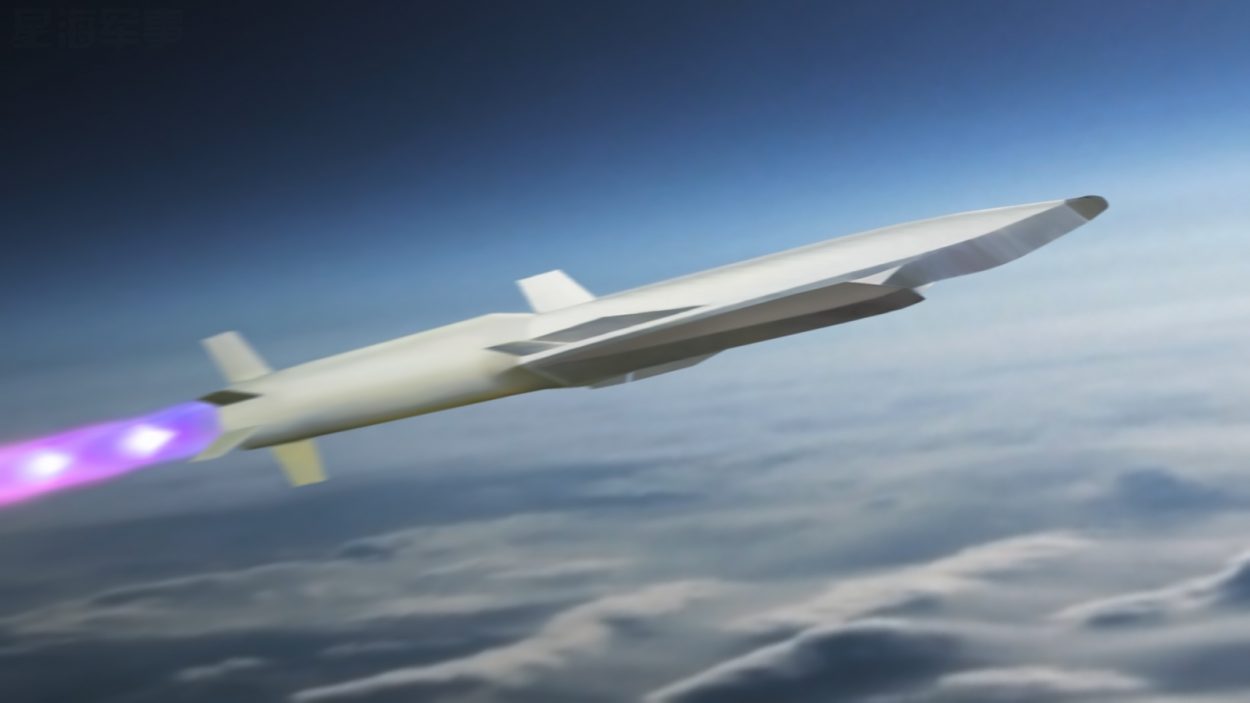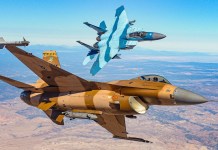The US Navy has revealed its concept for a next-generation destroyer — DDG(X) — a warship capable of deploying hypersonic missiles and laser weapons.
According to a US Naval Institute (USNI) report, this is the largest and most ambitious design for any surface warship the Navy has suggested in more than two decades. The previous Zumwalt-class stealth destroyers had drawn severe criticism.
How US’ Powerful Missile Defense System ‘Shot Down’ A British RAF Fighter Jet In The Middle-East
Cost overruns, delays, and technical problems resulted in the watering down of many of its features and just three of the initial 32 planned ships were manufactured and deployed.
The new ships will be equipped with combat systems derived from the existing Flight III Arleigh Burke-class missile destroyers, which feature the SPY-6 air search radar and the Baseline 10 Aegis weapons system, the report claimed.
Navy Unveils Next-Generation DDG(X) Warship Concept with Hypersonic Missiles, Lasers – USNI Newshttps://t.co/Z6xWs6Zkig
— Sam LaGrone (@samlagrone) January 12, 2022
During a briefing at the Surface Navy Association symposium on January 12, Katherine Connelly, deputy program manager, said, “Capabilities that we’re going to need for the 21st century to continue combating the threat are increased missile capability sensor growth, directed energy weapons, which actually require a lot of power, increased survivability and increased power availability.”
Chinese Hand Behind Taiwan’s F-16V Crash? Experts Decode Why US’ ‘Most Advanced’ F-16 Viper Crashed In The Sea
The size of the ship and the program’s expected expenses have not been disclosed yet. Nevertheless, the new warship could cost more than a billion dollars per hull, taking into account the development expenditures of an Arleigh Burke-class ship and a Constellation-class frigate (FFG-62).
Following the completion of a draft Capability Development Document, the program office is currently working with the defense industry to polish the fundamental design. The shipbuilding industry will also contribute to this task.
“One of the key things that we’re finding from that is the upfront and early engagement of industry to help us inform our design decisions, our design process. And by doing that, that will enable us to design a platform that is both producible and affordable in the future. So industry will be part of that decision trade space as we move through the design process,” Connelly said.
The Next-Generation Destroyer
The US Navy has 22 Cold War-era Ticonderoga-class guided-missile cruisers in service and 69 Arleigh Burke-class destroyers. The Navy built the Ticonderogas between 1980 and 1991 and anticipated to replace them by now, but a shortage of finance over the following 20 years has stalled progress.
Chinese ‘Moon-Walk’ On Earth! Beijing Says Developing Zero Gravity Conditions On Earth With Ambitious Lunar Project
The Arleigh Burke-class has been in continuous production since 1988, having been modified with new technologies and a helicopter hanger.
The Ticonderogas protect high-value US Navy battleships. They are outfitted with SPY-1A air defense radars, the Aegis Combat System, and 122 missile silos to counter mass missile strikes on aircraft carriers and battle groups. The Arleigh Burke destroyers are equipped with a more advanced SPY-1D radar and 90-96 missile silos.

The Navy’s current idea seems to place the new ship as the main escort for carrier and amphibious groups while the Constellation-class, which is under development, guided-missile frigates and littoral warfare ships play secondary roles.
According to the Defense News, the proposed destroyer will be distinguished by “a new hull design, an efficient Integrated Power System, and better endurance.” The power supply will be critical for integrating the laser weaponry that will most likely be installed aboard DDG (X).
The possible retirement of the Ticonderoga class, with its 122 silos, implies that the next-generation ship will most certainly contain at least 100 silos, if not more. The proposal also aims for a 25% decrease in fuel consumption compared to the Arleigh Burke-class destroyer (DDG-51). DDG(X) intends to improve US’ sea-keeping and Arctic operations. The Arleigh Burke destroyers were built particularly for use in the tropics.
Rafale-M (Marine) OR F-18 Super Hornet: Indian Naval Commander Decodes The Ideal Fighter Aircraft For INS Vikrant
Integrated Power System
The new ships will, however, supplant the Arleigh Burkes’ outdated gas-turbine propulsion system with an Integrated Power System found on the Zumwalt class of guided-missile destroyers.
According to the report, it should be able to generate up to 50 megawatts of electricity, which would be enough to operate 600-kilowatt combat lasers and new sensors.

The Zumwalt-class DDGs are driven by gas turbines that power a ship-wide electrical grid and generate more than 75 megawatts of power, enough to power a small town. The technology will be critical in generating the power for directed energy (laser weapons) and new sensors on the new DDG(X).
The new ship could theoretically charge up to 600-kilowatt lasers, which would be strong enough to intercept hostile guided missiles. The DDG(X) will also most likely be equipped with a multi-purpose 5-inch gun and massive silos capable of holding the Navy’s latest hypersonic missiles.
Air defense missiles, long-range anti-submarine rockets, cruise missiles, and anti-ship missiles will all require standard-sized Mk. 41 Vertical Launching System on the ships.
- Contact the author at ashishmichel@gmail.com
- Follow EurAsian Times on Google News




